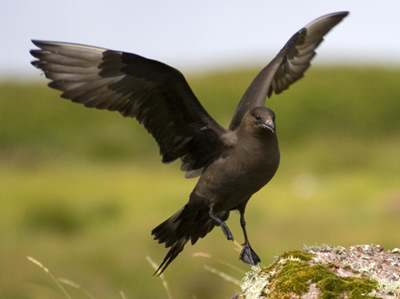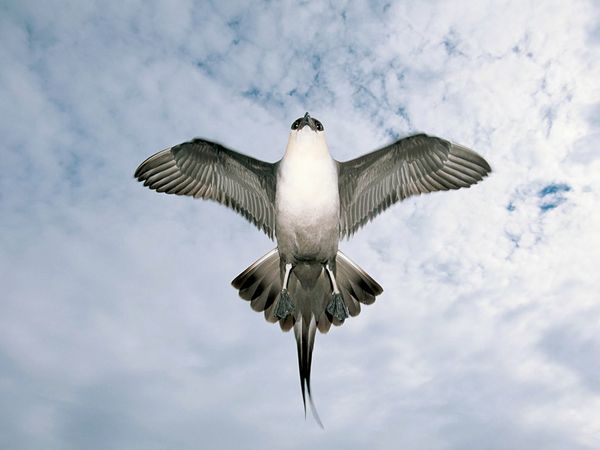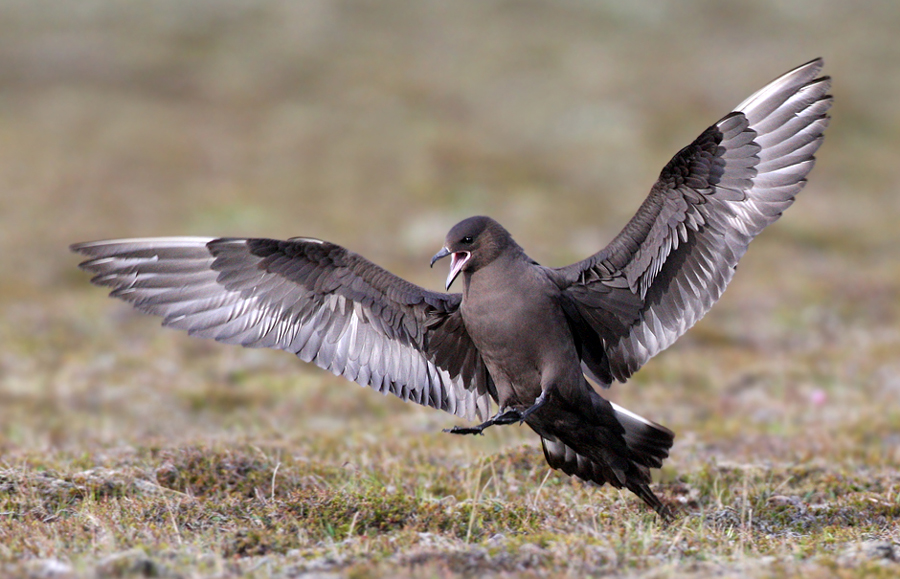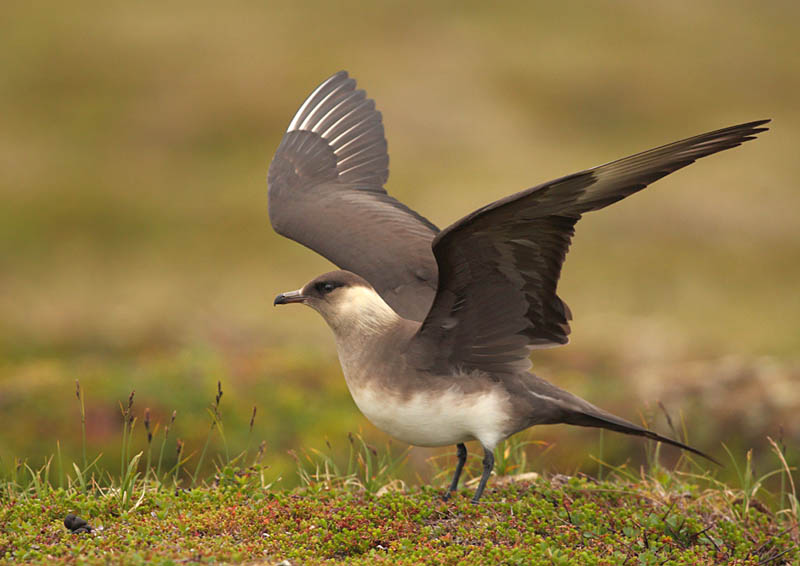
Stercorarius parasiticus
SUBFAMILY
Stercorariinae
TAXONOMY
Larus parasiticus Linnaeus, 1758, Sweden. Monotypic.
OTHER COMMON NAMES
English: Parasitic jaeger, parasitic skua, Arctic jaeger; French:
Labbe parasite; German: Schmarotzerraubmцwe; Spanish: Pagalo
Parisito.
PHYSICAL CHARACTERISTICS
16–18 in (41–46 cm), 0.7–1.3 lb (330–610 g); strikingly different
morphs—a dark (uniform sooty brown) and light form
(dark gray head, white neck and belly, dark back and wings).
Some with cream underparts and hindneck, straw yellow ear
coverts, sometimes a pale brown neckband.
DISTRIBUTION
Circumpolar within the band 57–80 degrees north, winters in
Southern Hemisphere oceans close to coasts.
HABITAT
Breeds on tundra, moorlands, or grasslands; winters in oceans,
often close to land.
BEHAVIOR
Diurnal; often associates with alcids, gulls, and terns, both
while foraging and breeding.
FEEDING ECOLOGY AND DIET
Often nests close to other seabirds, where it obtains all its food
from piracy or by preying on lemmings and the eggs and
chicks of heterospecifics. In winter normally aggregates with
other seabirds from whom it pirates.
REPRODUCTIVE BIOLOGY
Often solitary breeder or at the edge of colonies of other
seabirds on tundra. Monogamous; lays one to two eggs; both
sexes incubate the eggs and care for the young. Incubation period
26–27 days. Fledging period 26–30 days. Breeds at three
or more years.
CONSERVATION STATUS
Not threatened; widespread but at low densities. Persecuted by
humans in some regions.
SIGNIFICANCE TO HUMANS
Persecuted in some regions because of perceived damage to
sheep and other livestock.
Other popular Animals
Photo Gallery of - Arctic skua




 Animalia Life
Animalia Life